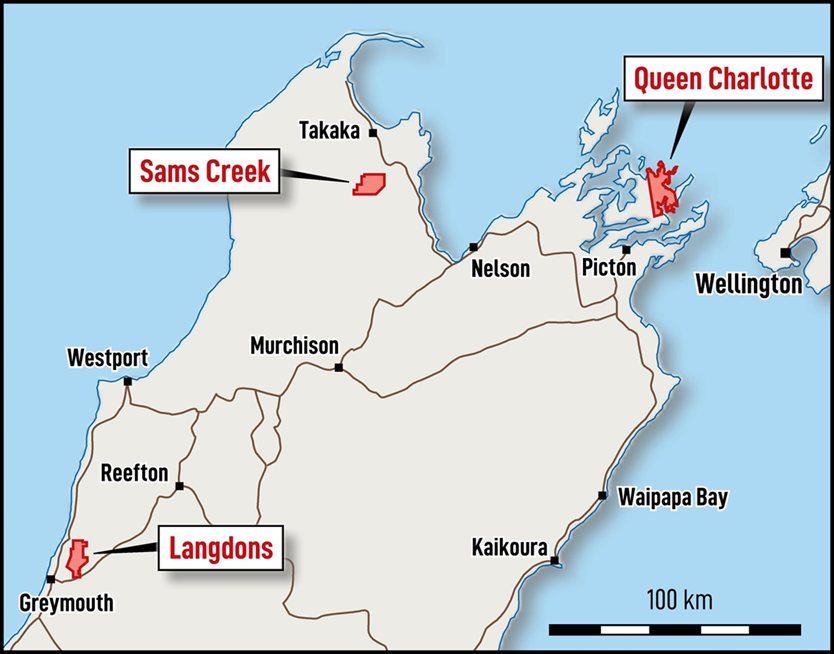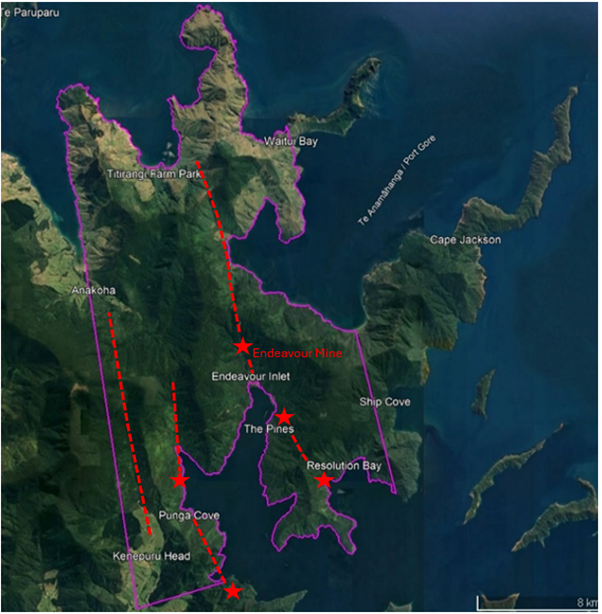Queen Charlotte
Queen Charlotte
Sams Creek Gold Limited, a wholly owned subsidiary of Siren, has been granted the Queen Charlotte exploration permit that contains the historic Endeavour antimony mine. The Queen Charlotte gold-antimony mineralisation that contains the historic Endeavour antimony mine is 120kms to the east of Sams Creek. This mine was the largest antimony mine in New Zealand, producing over 3,000t of stibnite (antimony) ore that was direct shipped to England between 1870 and 1890.
The new permit enhances Siren’s focus as a New Zealand gold and antimony explorer, with three key projects in the upper South Island of New Zealand: Sams Creek gold project in Upper Takaka, Langdons antimony-gold project near Reefton and now the Queen Charlotte antimony-gold project in Marlborough.

Endeavour Inlet Mine
In 1873 mineralisation containing 60% antimony was discovered in a landslide near the saddle between Endeavour Inlet and Port Gore within a line of mineralisation running from Titirangi Bay through the Endeavour Inlet to Resolution Bay. The high-grade ore was sorted by hand and exported untreated, while the lower grade ore was for a period treated at a smelter adjacent to the mine (MacDonnell 1993).
The historic workings penetrated less than 100m deep into a mineralised system that is 1-2kms long and has a surface exposure extending more than 400m vertically. In addition to the antimony, this mineralised system contains significant gold, but it was not recovered.
The known part of the Endeavour mineralised zone is about 1,200m long. The Endeavour mineralisation may connect with the East Endeavour Inlet and the Resolution Bay mineralisation along strike to the SE, which would increase the strike length to 5-6kms. The known vertical extent of the Endeavour mine exceeds 400m, but the total vertical extent could be significantly greater.


